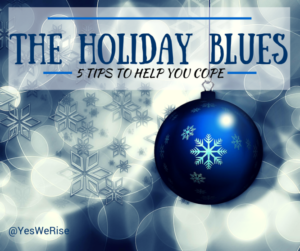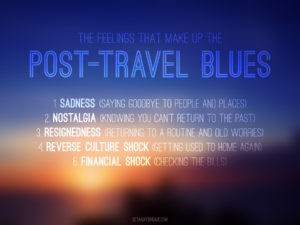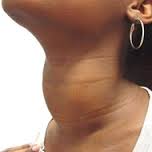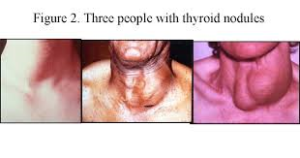

After spending a wonderful holiday over the Christmas Eve, Christmas, New Years month of December some people feel blue and find that it’s difficult to function normally in their daily rhythm. As defined by the DSM IV, holiday blues, holiday depression, or post-Christmas blues, these commonly used terms depict the mental distress occurring after the winter holidays and festival season. This article is focused on experiencing the “blues” since this term suggests mild mental distress, a commonly occurring phenomenon when dealing with daily life stress and change.
Dr. David Miers is the Counseling and Program Development Manager for Mental Health Services at Bryan Medical Center in Lincoln, NE. In addition, he co-chairs the Nebraska State Suicide Prevention Coalition. He said, “During the holidays there’s an increased stress, demands that are placed on individuals.”
Whether that stress is financial or a full calendar of events, Dr. Miers said it can be hard to find a balance.
“It’s important to set limits for yourself. It’s important to look at your exercise, that you’re exercising, that you’re eating a healthy diet and that you’re sleeping, that you’re getting an adequate amount of sleep.”
Besides the stress, the holidays can also be a lonely time or a time of grief. Larry Collins experienced one year recently loosing his mother.
“My mother’s passed away, but this was her favorite time of the year and every time this comes around I think of her.”
Dr. Miers said it’s important to set new traditions, while also remembering the old ones. He added, helping others during your own time of need, can also do yourself some good.
“Sometimes it’s somebody reaching out and volunteering, or spending some time at an event volunteering your time to help other people.”
The “Holiday Blues” aren’t uncommon and it’s important to recognize the signs and symptoms:
-Becoming more isolative
-Changing in eating and sleeping habits
-Gaining or losing weight
-Feeling more irritable
Dr. Miers said, “Depression is also one of the most treatable, and that seeking help is a sign of strength and there are treatments available.”
If you’re struggling this season seek for some for of counseling or help by a therapist or doctor. You can simple get involved with a community depression group. All you have to do is research on the internet.
POST HOLIDAY TIPS FOR THE BLUES AFTER THE PARTYING FROM THANKSGIVING TO 2017:
1.) EXPECT SOME LET DOWN AFTER THE HOLIDAYS:
The holiday season is both joyful and stressful at once. There is family to get along with, gifts to buy and return, people to visit, activities to throw yourself into, plenty of festive food to eat, sales to rush to, and parties to plan and attend. Topped off with the
excitement of New Year’s Eve, your adrenaline has probably been pumping a lot of the time during the Christmas and New Year’s period. Returning to the usual routine and probably quieter workplace than normal can dampen your spirits just by the absence of exciting things to do and look forward to. Equally, if your Christmas and New Year’s Eve period wasn’t as enjoyable as you had hoped, you can be left feeling down about the lack of enjoyment you’d expected and this can sour your mood. Expecting to feel a little low is a way of telling yourself that this is a normal feeling and that it will soon pass once the routine re-establishes itself.
- Look at your past experiences to enlighten you as to your normal post-holiday feelings. Do you always fall into a slump after the holiday season? If you have spent period after last two holidays in despair, then the chances of this post holiday period continuing in despair are high. Look carefully about what you did last time and what relaxed you. And realize that generally this is a phase that is easily fixed.
2.) CHOOSE TO SEE THE BENEFITS OF POST HOLIDAY SEASON:
The good side to the end of the holidays is that you’ve had a chance to rest, to relax, and to enjoy yourself. The craziness prior to Christmas has ended both at the workplace and in the home, and the restful time after Christmas and New Year’s Eve has hopefully given you the opportunity to do things that are different from your usual routine. And any break in the routine is good for the spirit, providing you with the chance to rejuvenate.
- Take it easy when you’re settling back down into your usual routine. Your more rested self is a good thing and gives you an opportunity to take a renewed perspective on your work, routine, study, or home life pace.
- Perhaps the break has given you perspective on your life, job, relationships etc. If so, this is a good time to consider making changes to improve your situation, especially because not making the changes can prolong your blues.
3.) BE GENTLE ON YOURSELF WITH RESPECT TO YOUR NEW YEAR’S RESOLUTION:
If you set the bar too high and you already feel as if you’re slipping, don’t berate yourself. Instead, look at your resolutions realistically and assess whether they need some tweaking to ensure that they’re achievable. Discard the resolutions that required you to be too harsh on yourself and reform them into ones that can be met now that the heady atmosphere of New Year’s Eve is behind you. Think of it as a double checking of the details, and simply fiddle with the fine print!
- Ensure that any goals you’ve set are reasonable and most importantly achievable. Taking weight loss as an example, targeting for a size zero is unrealistic, but looking for 1 pound loss in a span of week seems to be more achievable.
4.) CONTINUE TO SPEND TIME AROUND PEOPLE; DON’T SEE PEOPLE ONCE A YEAR!
Some of the post-holiday season blues might be related to having been around many people over the Christmas break and then suddenly finding yourself surrounded by people you don’t know that well, or even not by many people at all. Lift your spirits by continuing to stay connected with friends and family (far away now there is always the phone0); also getting out and about to do activities where other people interact with you. Trust me your not the only one experience this if your going through the post blues.
5.) DO THINGS THAT GIVE YOU CAUSE TO LOOK FORWARD TO SOMETHING AFTER THE HOLIDAYS:
Do things that give you cause to look forward to something. Revive the excitement of anticipation by arranging fun activities, such as having dinner with friends, starting a new class for a hobby or interest, attending a sporting event regularly, going to the movies, etc. Choose activities that meet your budget and interests, and that you know will give you a thrill.




